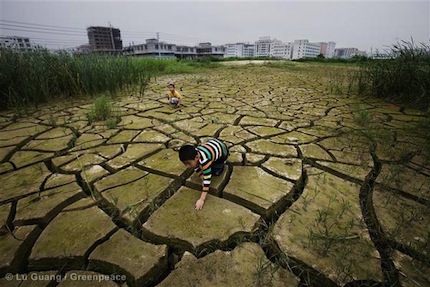Scientists discover new sources of freshwater under the sea that could last thirsty megacities like Shanghai for thousands of years

Scientists have discovered potentially vast undersea reserves of groundwater, close to many coastlines around the world, which could provide essential resources for water-scarce regions including China and Australia.
Although previous drilling programmes confirmed the existence of isolated freshwater aquifers in the East China Sea and elsewhere, new research suggests that such offshore groundwater reserves may be more widespread than previously thought.
The study, published in Nature earlier this month, estimates there are half a million cubic kilometres of low-salinity groundwater buried under the seabed worldwide. Substantial amounts are thought to sit under the coastlines of Europe and the North Sea, as well as in the East China Sea, the US East Coast and Southern Australia. According to Jacobus Groen, professor at the University of Amsterdam and one of the paper’s co-authors, some reserves could contain enough water to last thirsty megacities such as Shanghai for “hundreds, or even thousands of years”.
In China, where water pollution and groundwater over-extraction has created acute water shortages along the coast and in cities, such reserves could be valuable. On Shengsi Island, east of Shanghai in Zhejiang province, the Chinese government has already started to develop offshore aquifers to alleviate the town’s water-scarcity. Switching from onshore to offshore groundwater extraction would also help mitigate the subsidence problems facing cities such as Beijing and Shanghai.
Advantages over seawater desalination
Offshore groundwater is moderately saline (or “brackish”) and, like seawater, requires purification before use. However desalinating offshore groundwater has tangible benefits compared to desalinating seawater. The low-salinity of brackish groundwater means that its per unit costs are significantly cheaper and less energy-intensive – a fifth of the cost of treating seawater.
Seawater desalination also carries higher environmental costs: as well as consuming huge amounts of energy and coal, the briny wastewater can also damage coastal ecosystems if not properly disposed of.
China has already made huge investments in seawater desalination, with a target of tripling seawater purification capacity by 2015. This puts the country in an ideal position to take advantage of this new resource opportunity.
There are still some worrying caveats. Offshore groundwater extraction carries similar long-term ecological risks to pumping groundwater onshore, including subsidence, which could lead to long-term lowering of the sea floor. Drilling and pumping water could also collapse the aquifers, leading to seawater intrusion and contamination of extracted freshwater. Offshore groundwater reserves may already be contaminated from oil drilling or other human activities nearby.
Offshore groundwater recovery will require costly infrastructural investments, including platforms and undersea pipelines to transport water. However, the paper’s authors note that with sufficient economies of scale, offshore groundwater could still be more cost-effective than seawater desalination. Costs will also be minimised if reserves can be accessed through islands or connected aquifers inland, as has been the case on Shengsi Island.
Scramble for water resources
More research is still needed to map the distribution of reserves worldwide. The location of aquifers raises political questions over their future governance. Though this is not an issue for existing reserves in the East China Sea, which are relatively close to the Chinese coast, study co-author Ge Shenmin notes that, like oil, “when water flows below the surface, it doesn’t recognise any territory”. The discovery of undesea aquifers may trigger conflict between countries in the future, particularly in regions like East Asia, where maritime territory and resources are already hotly contested.
Despite the optimism, such reserves are still “uncharted territory”, cautioned Ge. It will take many years and further research before these resources can become commercially viable. Moreover, offshore groundwater reserves are non-renewable resources, like coal or oil. Any long-term solution to the country’s water crisis will need to tackle the problem of unsustainable demand, rather than trying to expand supply.